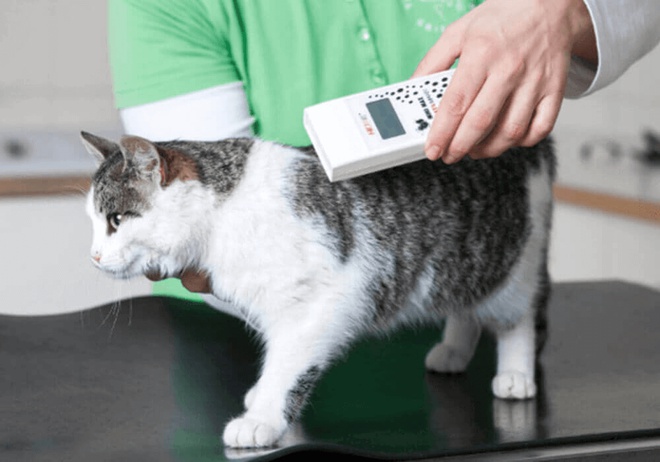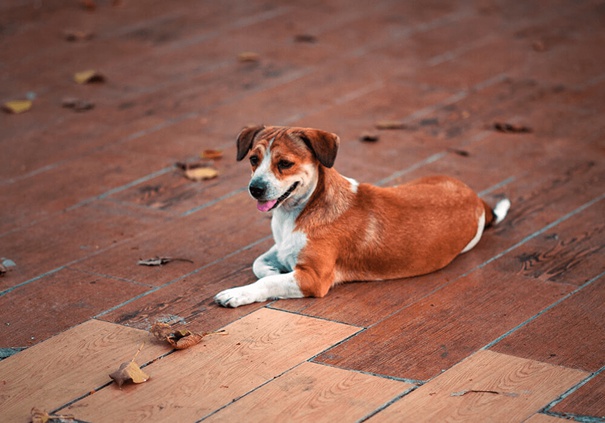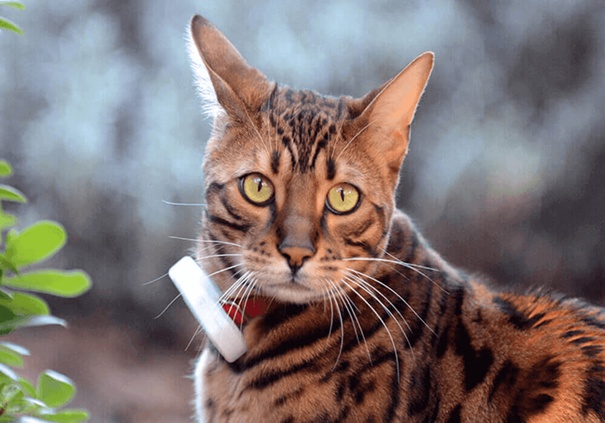How to find a microchipped cat or dog?
It is much easier to find a cat or dog if it has a microchip. A dog warden, a vet or even an animal shelter will be able to scan the pet’s microchip and contact its owners. But can you also geolocate your lost animal with their microchip?
In this article, you will find tips to find your lost microchipped cat or dog.

Reading time : 4 min
In the UK, it is mandatory under English law that you microchip your dog. Cats however do not have to be microchipped, even though it is highly recommended. Pets must also be registered on a microchip database with their information frequently updated.
So why is microchipping your pet so important? Can you use a microchip to locate and find your lost cat or dog? A lot of question that you might be asking yourself about the importance of identifying and registering your animal.
TOPICS
Registering your pet on a UK online database

Registering your pet on a database is not only essential but also mandatory. If your pet were to get lost, a vet or animal warden could easily identify your animal by scanning their microchip and reunite you with your lost cat or dog.
A microchip also proves that you are your pet’s rightful owner in the event of a dispute. Your name and contact information will be linked to your pet’s microchip.
It is therefore very important to register and update your contact information on a microchip database like Animal Microchips, Animal Tracker, MicroDogID or Pet Identity UK.
Why is microchipping your animal important?
A pet microchip is a permanent id tag that is injected under the pet's skin. The implantation is painless. The unique identification number assigned to a dog or cat gives the animal an official status. Moreover, for the owners, it certifies that the pet in their possession is indeed their own.
In the event of a dispute, or if someone wants to adopt an animal without the owner’s agreement, they can assert their rights to the animal.
On the other hand, the dog or the cat’s identification number is used to easily find the owner's details. Veterinarians and animal wardens can identify the animals found and read the information contained in the microchip. The next step is to notify the owners that their pet has been found.
A microchipped dog is more likely to be reunited with its owner. Likewise, a runaway cat will more easily be found if it has been microchipped.
The importance of updating your information
It is essential to keep the information about your cat or dog up to date, just like your contact details. In the event of a transfer of the pet, both in return for payment and free of charge, it is important to take the steps to change ownership.
Because if the animal were to run away and cause an accident, the responsibility would fall on the first owner of the animal who did not declare the transfer of the animal.
How to find a lost cat or dog with a microchip?

It is important to remember that a microchip will be crucial in finding your pet. Every dog warden or vet will need to scan a microchip to find a lost animal’s owner.
Contacting the Animal Warden
Dog wardens are in charge of any stray animals, primarily dogs but they nowadays have to deal more and more with other animals. If the Dog Warden has found your pet, they will first scan their microchip to find your information and contact you. They are required to keep strays for up to 7 days before rehoming the animal.
You can find the Dog Warden’s information through the Environmental Department of your local council.
Contacting your local veterinary clinic
If someone has found your lost pet, their first reflex might be to bring them to their local veterinarian or veterinary clinic. Even more so if the animal is injured. The veterinarian will be able to scan the microchip and get in contact with you. Both vets and animal wardens are used to identifying lost pets.
Find out the 5 most important steps to find your lost pet
All the information you need to find your beloved companion
The GPS tracker as extra security

A common misconception about microchips is that you can geolocate your animal with them. This theory is simply not true. A microchip centralises information but is not a GPS tracker as it does not have the technology.
Microchip vs GPS tracker
The microchip is an implant no larger than a grain of rice between the shoulder blades under the skin. The microchip contains information about the pet that can be scanned by a vet or animal warden using Radio-frequency Identification (RFID) technology. It has a limited scope.
Never lose your animal with a GPS tracker
A GPS tracker is a box containing all the technology that allows you not to lose your dog or cat. Attached to the collar, its small size and lightweight ─ about 25 grams ─ provide security for the pet without disturbing it. A downloadable app via a smartphone allows the owner to be permanently connected to the GPS chip in the tracker. With unlimited distance tracking in real-time, the owner is immediately informed of his pet’s exact location.
Conclusion
Many owners do not necessarily see the necessity of having their pet microchipped. Yet identification protects them as much as it protects their cat or dog. But beyond that, it is proven to be a significant help in the search for their missing pet.
However, the microchip does not work miracles and is certainly not capable of geolocating a lost animal. GPS collars for cats and dogs are very effective in locating animals, as their technology now allows precise tracking.
Continue reading our guide
This article is part of a complete guide on the subject. Do not miss the next chapters.
How to find a lost pet ?
Discover the 5 most important steps
All the information you need to find your beloved companion


